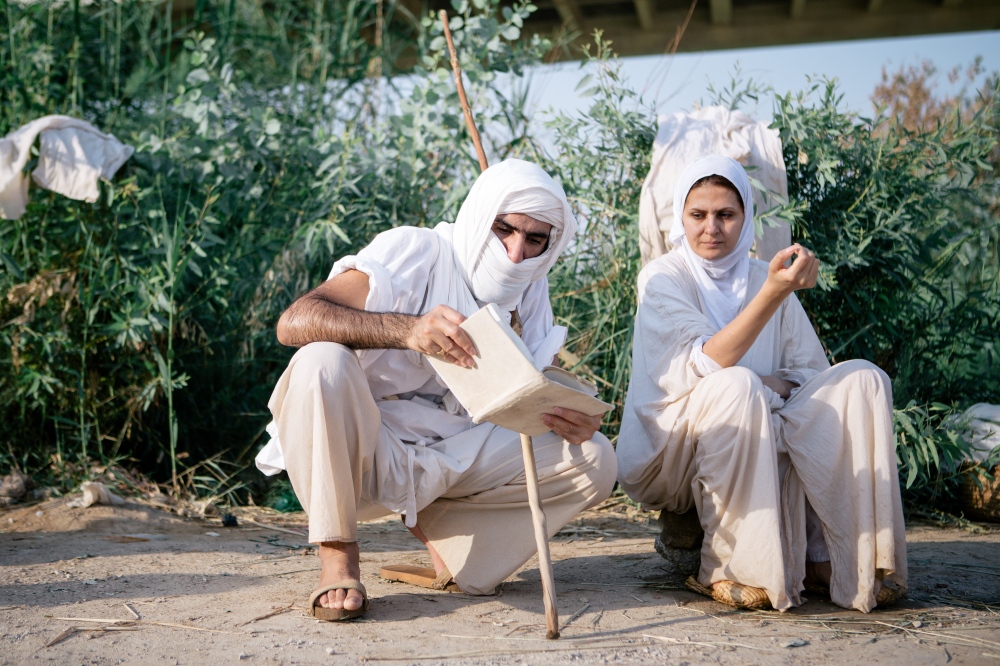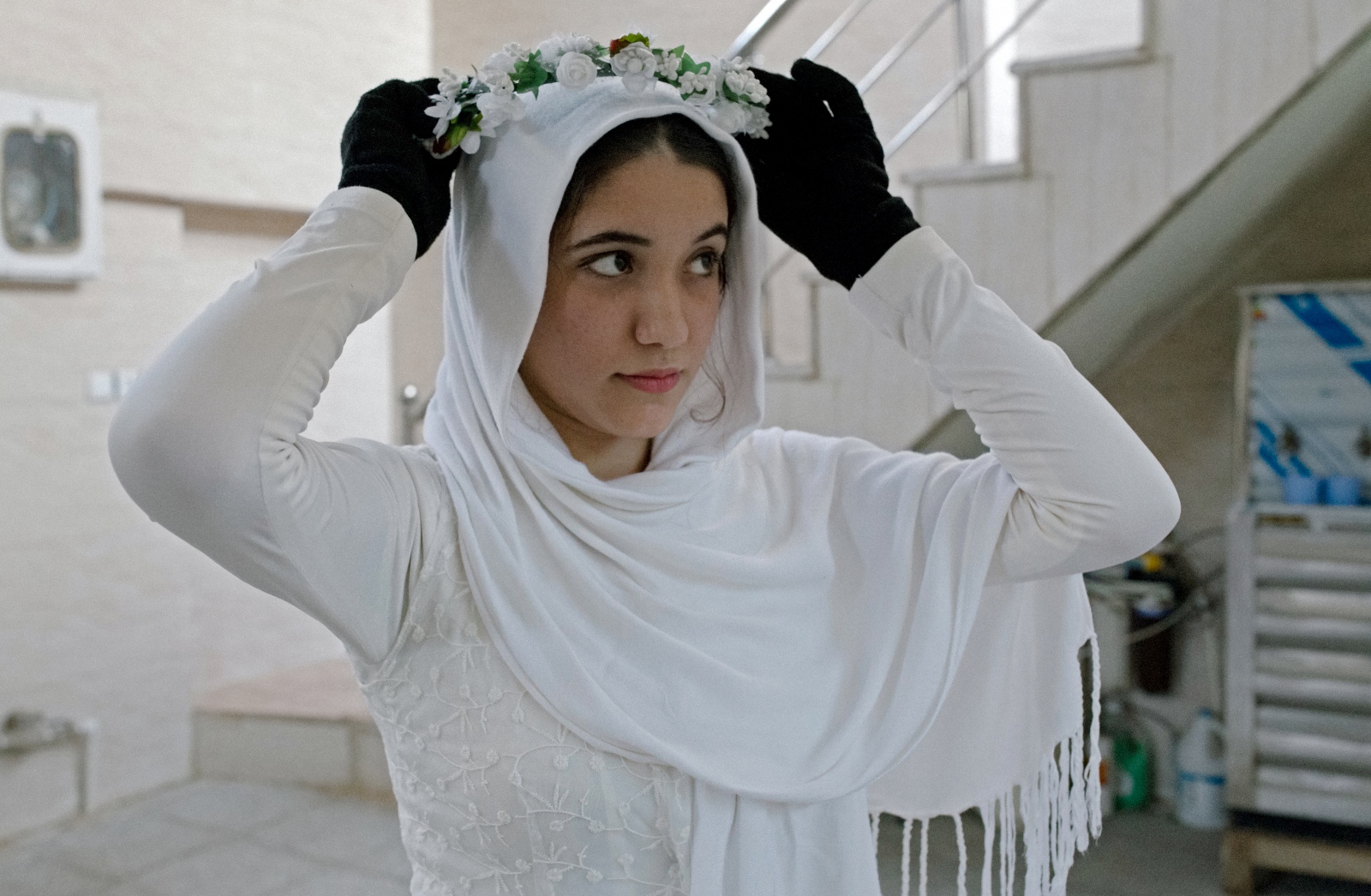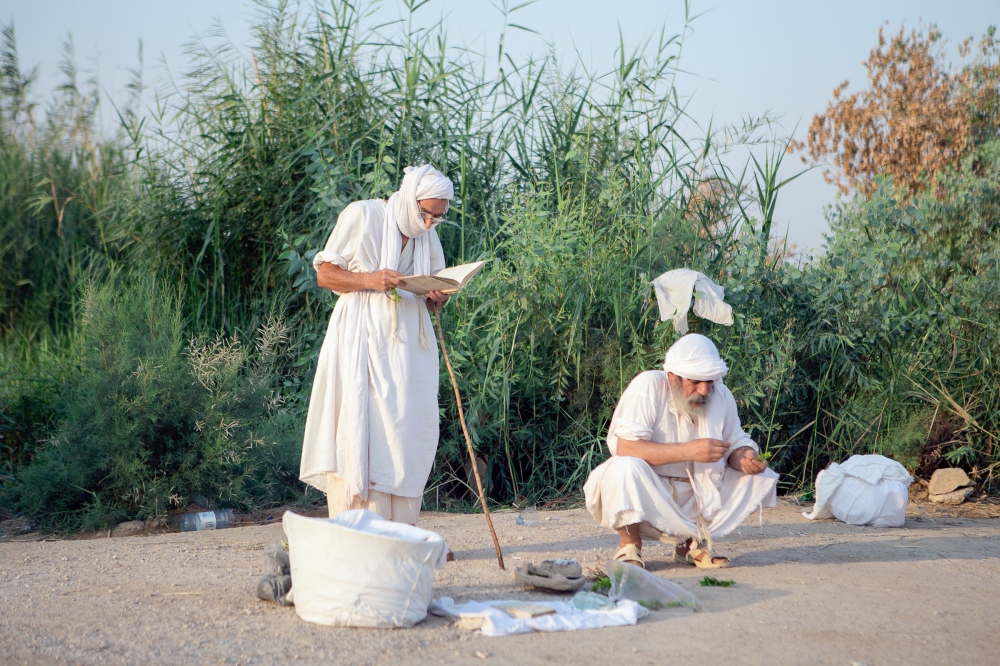Also by Solmaz Daryani —
For more access

One of Mandea baptisms at occurs at the time of marriage.A mandean priest reads Ginza Rabba ( The Great Treasury) for bride before her baptize.Ahvaz, Iran.2016


Don’t take photos of the places that are dirty,” says Ms. KHafaji, the administrator of the Mandi, the place of worship for Mandaeans. “Take photos here; of the parts that are clean. “As Mandaeans are occasionally and arbitrarily labeled as Najis (ritually unclean, by the Muslim community of Ahvaz), This two-fold tension between the Mandaeans' imagery of the purity of the Karun River and the Muslim community's image of Mandaeans as ritually unclean as well as the reality of the pollution of the Karun river shape the story.Ahvaz, Iran.2016
They have performed baptisms following rites of passage—birth; marriage; illness; travel; sin. They immerse themselves in the water. They imbibe it during their religious practices. According to their doctrine living water is their closest connection to the world of light. But the water that runs through the Karun is also heavily polluted with a discharge of industrial and agricultural waste into the river. Ahvaz, Iran.2016
Karun River with the length of 890 Km, is the longest river in the country which flows along many industrial and agricultural zones, however the discharge of untreated urban wastewater and industrial effluent, and the uncontrolled discharge of solid wastes directly into Karoon River. Ahvaz city, Iran.2016
On the banks of the Karun River, crushed bottles litter the silt like dead fish; the plastic glints like scales. A man, wearing a white shirt, pants and turban, stands at river’s edge with arms outstretched, his toes touching the tide, as he meditates in prayer. Ahvaz, Iran.2016
A local fisherman throws his net into the Karun River close to where Hospital waste goes into the water. Overexploitation of the Karun have spoiled the vitality of the critical water source and turned its blue waters green. Ahvaz, Iran. September 2016
The banks offer a rare respite from the city of Ahvaz – a city that carries the title of world’s most air-polluted – and its population of 1.1 million. From here, the traffic that rushes across the Pol-e Sefid, the White Bridge, which crosses over the Karun and leads into the city centre is no more than a murmur. But the acrid smell of sewage is inescapable—a consequence of the volumes of wastewater that gush directly into the river, untreated. Ahvaz, Iran.2016
Saeede, 18, gets ready for a religious singing ceremony. She talks about the challenges she and her peers face as Mandaeans, who are perceived as "Najis" by the broader regional community.In school, some of her friends choose not to admit they are Mandaean, she says. Ahvaz, Iran. November 2016
